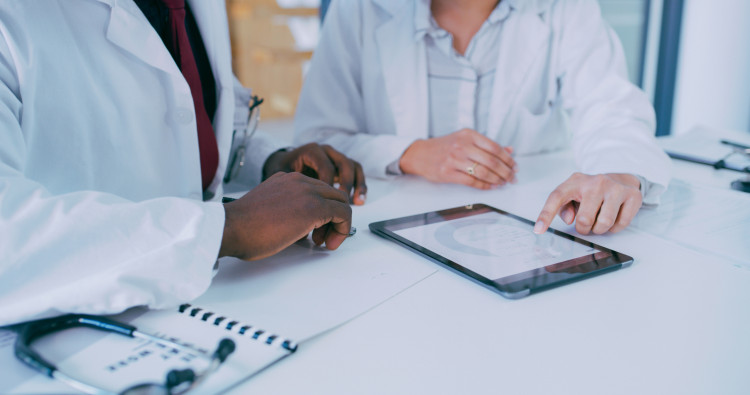Two months into the year and there have been many landmark moments for women’s health. In the US, a menstrual pad with a removable strip to collect blood samples for clinical tests has received FDA clearance. In the UK, new priorities have been set for its Women’s Health Strategy. Experts discussed closing the existing women’s health gap at this year’s Davos. However important and positive these increments are, they are each a drop in the ocean when compared to the fact that women still live a quarter more of their life in poor health than men.
This gap has been built up over generations and has economic and social consequences as well as harming billions of lives. McKinsey recently published a report suggesting that investments addressing the women’s health gap could boost the global economy by $1 trillion annually by 2040, identifying four primary areas that need to be addressed: science, data, care delivery and investment. The Femtech industry – a subcategory of Healthtech using technology to address women's health issues – is already contributing to women’s health in all of these areas, yet its impact is yet to be fully realised.
Take data for example; one condition impacted by limited data and research is endometriosis, a long-term, debilitating condition caused by tissue growth. Widely known to be mis- and under-diagnosed, women can often be left feeling isolated and ignored. In the long-term, more research must be conducted to understand the cause of endometriosis, but for those already experiencing symptoms in the short-term, tracking apps like Frendo provide immediate support that healthcare professionals often can’t offer.
By providing women with the ability to monitor, track, and provide data on their symptoms, Frendo helps educate women on their condition, empowering them to advocate for their own health. It also leaves them with a wealth of knowledge on how symptoms may affect women differently and brings lesser-known symptoms to light. But the potential of apps like Frendo is broader than patient support, and the impact that these technologies could have on both industry and the health system are untapped.
Take data for example; one condition impacted by limited data and research is endometriosis, a long-term, debilitating condition caused by tissue growth. Widely known to be mis- and under-diagnosed, women can often be left feeling isolated and ignored. In the long-term, more research must be conducted to understand the cause of endometriosis, but for those already experiencing symptoms in the short-term, tracking apps like Frendo provide immediate support that healthcare professionals often can’t offer.
By providing women with the ability to monitor, track, and provide data on their symptoms, Frendo helps educate women on their condition, empowering them to advocate for their own health. It also leaves them with a wealth of knowledge on how symptoms may affect women differently and brings lesser-known symptoms to light. But the potential of apps like Frendo is broader than patient support, and the impact that these technologies could have on both industry and the health system are untapped.
Historically, the NHS has struggled to take on new innovations at scale. Wes Streeting has acknowledged the “pedestrian pace,” towards innovation sometimes seen by the NHS. However, if apps like Frendo were integrated into the health system, the data collected could help improve outcomes for women. It’s well known that short consultation times limit a patient’s ability to get the care they need, particularly with conditions which are hard to diagnose. Having this data readily available through an app could maximise the short time available during a consultation, help a clinician to spot patterns in symptoms and have confidence in referring patients for a laparoscopy for a formal diagnosis.
The pharmaceutical industry should also consider the potential of partnering with Femtech. The data gathered through apps like Frendo could support industry’s understanding of how symptoms may present differently in women of different ages, ethnicities, or points in their cycle, which may support in developing better treatments. It could even bring lesser-known symptoms to the fore, improving our understanding of the condition overall and leading us to a potential cure.
This is just one example of what could be achieved, and of course comes with many hurdles to navigate, but it begs the question; why aren’t we doing more to support the rise of Femtech, and what could we do to better the environment in the UK?
Ultimately, it requires a collaborative approach. By investing in Femtech, we’re investing in women and girls and their future health, but we’re also investing in wider society. Currently, 80% of the $1 trillion gap is generated in women of a working age. Recent research suggests that the UK loses 150 million working days due to lack of workplace support for women’s health. If we only consider the impact that improving women’s health could have on women, we undervalue the potential higher economic and social returns. As an industry dedicated to closing the women’s health gap ahead of us, supporting Femtech seems like an obvious step towards a solution.







